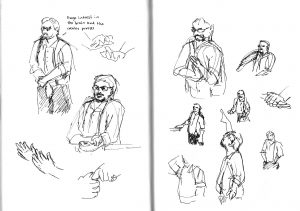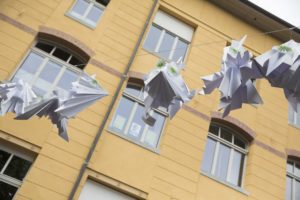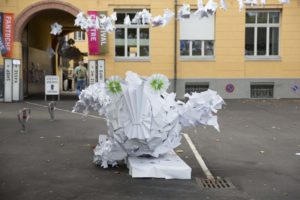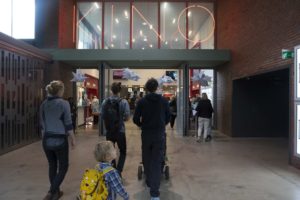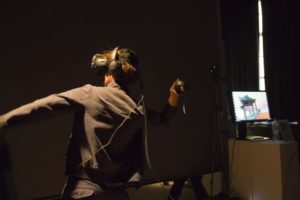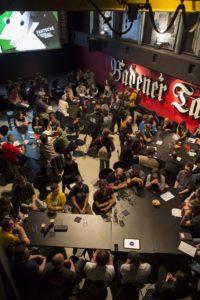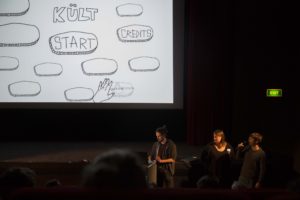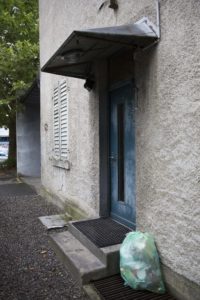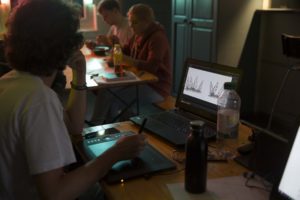AniTalk: Jadwiga Kowalska

The friends embarking on their trip to the Baltic Sea in Jadwiga’s latest film, “The Car that Came Back from the Sea” (2023)
I have been acquainted with Jadwiga Kowalska and her work for a few years, but I have never taken the chance to discuss it with her in depth. January 14, 2025 was the perfect opportunity. Jadwiga’s AniTalk took place that day, and I had just returned from a 4-day research trip to Poland for an upcoming project. My exploration of the country’s history and cinema, enriched by my recent trip, gave me valuable insight into the context of Jadwiga’s latest film, “The Car that Came Back from the Sea” (2023).
By her own admission, when Jadwiga starts working on a film her approach is more visual rather than narrative. This is especially evident in her earliest films. Namely, “Tôt ou tard” (2008) and “The Bridge over the River” (2016). The images and the impression that they left me with are still imprinted in my mind, but I would not be able to retell those stories with the same clarity to someone who hasn’t seen them. Jadwiga’s audiovisual approach showed me a path to the essence of those stories that is more akin to that of trying to comprehend a dream, rather than a logical sequence of constructed events.
Despite the variety of stories and techniques that Jadwiga has worked with over the years, whether it was cutout, hand-drawn or CGI animation with a 2D style, the look of her films has always had a raw quality that makes them feel alive. The brushstrokes and the texture of her animation feel organic, which I was especially impressed with in “The Car”. It was a refreshing approach to the mixing of CGI and 2D in a way that authentically supported her story.

Jadwiga Kowalska. Copyright: Ralph Kühne
“The Car that Came Back from the Sea” was the film that resonated with me the most. I had seen it at a festival before, but its impact on me was far stronger upon second viewing. The story is about a group of friends embarking on a road trip to the Baltic Sea, while martial law is imposed in Poland in 1981. It is inspired by the story of Jadwiga’s own parents deciding to flee the country following those events. Much of the dialogue in the film comes from interviews she recorded with relatives and people who shared their own experience about that time. In an early animatic Jadwiga showed us, its form was similar to that of an animated documentary, using the actual interviews as voice over narration. However, at that stage the story felt like a collection of vignettes rather than a connected narrative. With time, she narrowed down her story to focus on the perspective of Leszek, the protagonist, with a more fictional approach.
The most relatable aspect of the film for me is linked with something Jadwiga revealed during her post-screening discussion. She was motivated to make the film to understand why her parents left their country, and when she directly asked her mother about that, she said “there simply was nothing in Poland”. That is the same reason my parents gave me, when I asked why we left our home country of Belarus when I was a child. But in contrast with Poland’s evolution as a nation since the 1980s, Belarus has hardly changed ever since, and I got to witness it first-hand when I used to visit my relatives there. The opportunities to build a decent life in the country have only become more restrictive in time, and hearing Jadwiga discussing her parents’ story brought me closer to her film because of the memories it sparked in my own mind.

Martial law going into effect in Poland in 1981, as represented by Jadwiga Kowalska in “The Car that Came Back from the Sea”
I admire the positivity that “The Car” is imbued with. The characters are in a country on the brink of chaos, yet in the limits of their means, and despite not knowing what awaits them in the future, they still find a way to have fun during their trip. The good-hearted nature of this film is a rare quality in contemporary cinema, one which I find essential to the cinematic experience. Many films today are carried by anger and cynicism. The ideas of many filmmakers are clouded by strong emotions instead of focusing with a clear mind on the craft of good storytelling, which has the unique power of transporting the audience to a different reality and way of life from their own. This is what I consider to be the magic of cinema, and the reason I fell in love with it in the first place. I am delighted to have had the opportunity of experiencing this with “The Car that Came Back from the Sea”.
Despite the struggles that Jadwiga recounted about producing her film, a project 7 years in the making, her enthusiasm and especially the fun she had while creating it were evident both in the result, as well as in her discussion of the film. In fact, I think “The Car” radiates so much life precisely because there is no doubt in my mind, that Jadwiga’s urge to tell this story never waned, even now that the film is complete.













































